 Path: Travel > Travel > Destinations > Middle East 2006 > Turkey 2
Path: Travel > Travel > Destinations > Middle East 2006 > Turkey 2
Turkey 2
Turkey, the southeast
- After Iran we went back to Turkey, the region around Lake Van. The southeastern part of Turkey is dominated by Kurds and I must say that this gives the places we visited a different feeling to the rest of Turkey. The Kurds are more friendly and welcoming than the Turks; they also are poorer and have to cope with a certain backwardness in infrastructure which is mostly due to lack of funding from Ankara. The photo shows the site of old Van, a mostly Armenian city of some 80,000 people. It was almost completely destroyed in 1915; the only buildings still standing are a few mosques. Utterly incredible that literally nothing else, not even rubble, is left of what was less than hundred years ago a huge and thriving settlement. In the background is the famous Lake Van, a huge saltwater lake with an elevation of 1750 metres above sea level.

- Not far from Van, just off the southern shores of Lake Van, there's a small island with an ancient Armenian church on it. This is Akdamar Kilisesi (built c 920 AD), and it's certainly a worthwhile daytrip. Alas, when we were visiting, the authorities were busy with restorating the church and the whole thing was completely off limits: apparently visitors were not even supposed to take pictures (what might be so special about restoring a church that it has to remain a secret is beyond us). Anyway, this state of affairs made me very, very unhappy, so I sneaked inside the perimeter fence, brought the wrath of the site manager down on me… but took a few photos and got away with them:-)

- Another aspect of Lake Van and the mountain chains surrounding the lake. The photo was taken during a walk up a prominent hill on a peninsula on the southwestern shores.

- A big jump west, to Diyarbakir. We very much enjoyed this place, the warnings from guidebooks and other travellers notwithstanding. People were very friendly indeed and we experienced none of the problems (for example with aggressive, stone-throwing street kids) some people reported. Au contraire, we found the children (of whom there are indeed many; more than in any other Turkish city we have seen) to be a playful, good-humoured bunch who loved being photographed and in turn photographing us (a digital camera has its advantages, not least the LCD screen to admire a shot just taken). The photo shows the remains of a huge Armenian church whose roof came down during the 1990s. Still, an impressive ruin!

- The improbable stone heads of Nemrut Dagi. This monument, a tomb-and-temple complex for a local king called Antiochus I Epiphanes, is located on the very summit of Nemrut Dagi (2150 metres above sea level) and it's perhaps the most amazing site (and sight) in all of southeast Turkey. We spent a whole day and the night right there, on this plateau, with a view of the heads and the surrounding countryside (luckily our sleeping bags are pretty good, because it was a bit on the cool side). The whole structure was built around 50 BC by the said king; the heads are the remains of huge, now broken stone figures that could rival some Egyptian Ramses statues (the head of Fortuna stands almost four metres tall — and that's just the head!).
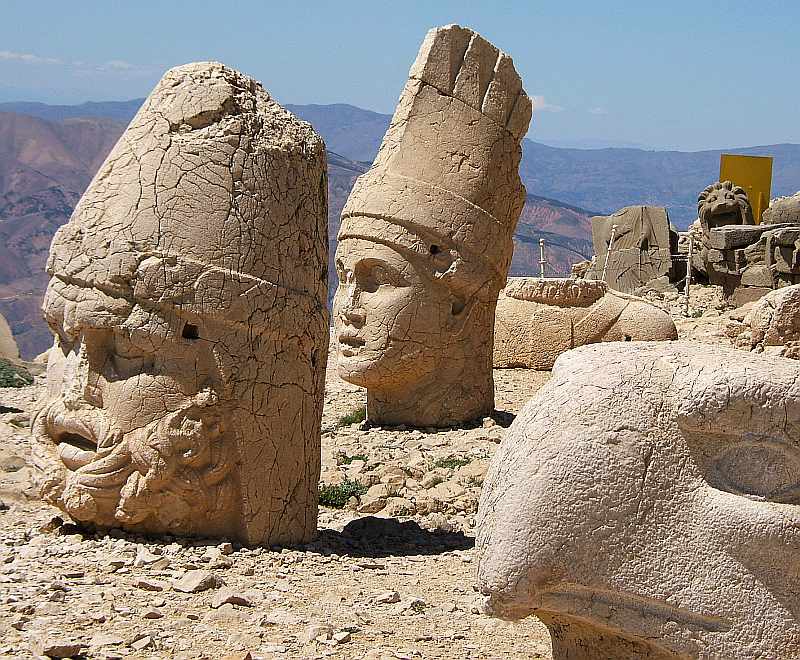
- A street scene in Sanliurfa (or Urfa, as the locals call their city). All the Kurds thereabouts (male as well as female) wear headscarves in a distinctive mauve shade we've only found in Urfa. The two men standing also wear their traditional baggy trousers.
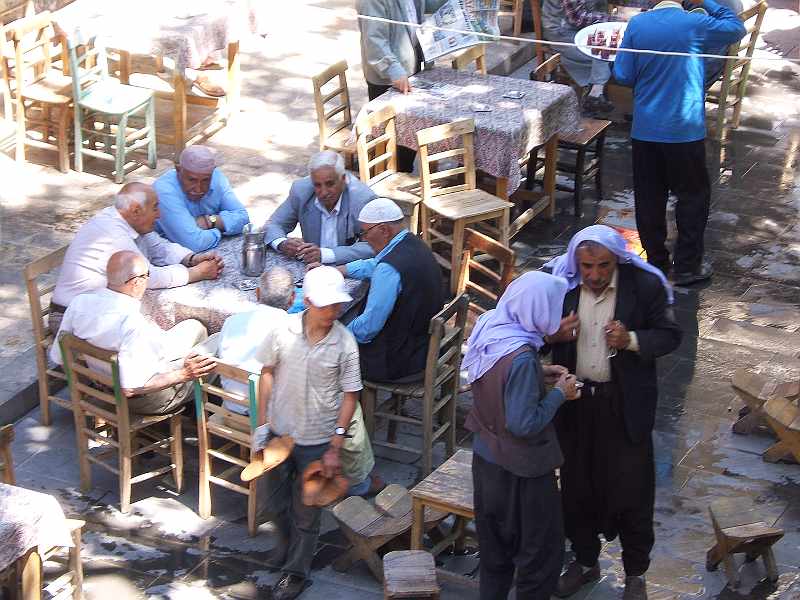
- Still in Urfa: a detail of the Armenian church of the Twelve Apostles that was long ago converted to a mosque, the Firfirli Camii.
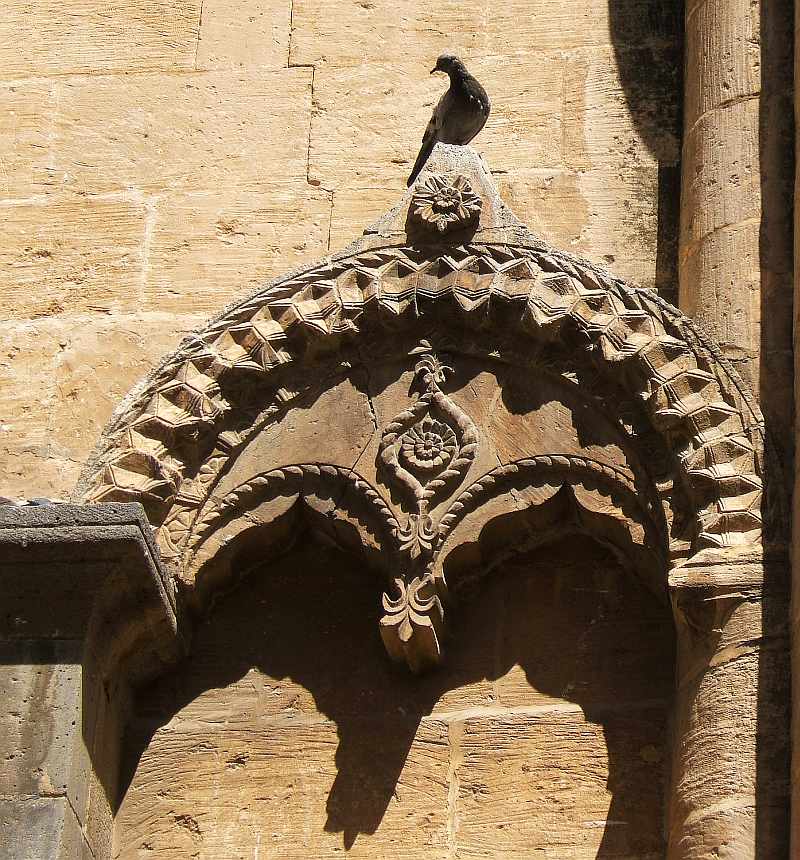
- This pic was taken in Mardin, a town about 150km east of Urfa, overlooking the vast, sun-burnt Syrian plains to the south. The place is famous for its many old houses which sport intricate stone work, like this door frame in the old Turkish post building.
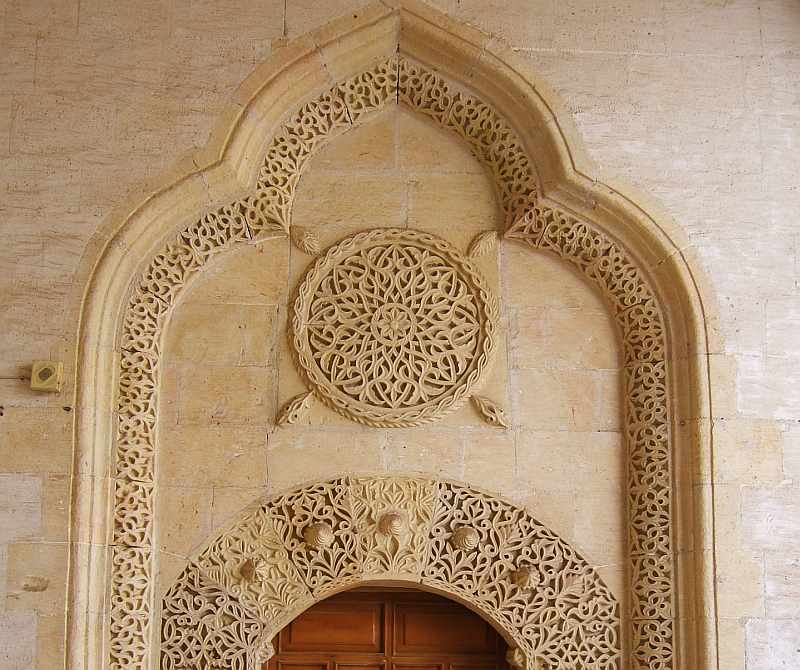
- This is the Syrian Orthodox church in Midyat, a market town a little to the southeast of Mardin, almost on the border to Syria. Midyat is nicer than Mardin, mostly because the compact old town is much better preserved, though we also found the people more friendly (in fact, Mardin is the only Turkish city we visited where the attitude of the locals struck us as cold and unwelcoming). We attended an evening service in this church and interestingly, there were by far not as many believers attending as we saw later the same week in Qamishli, on the Syrian side, where the churches were packed.
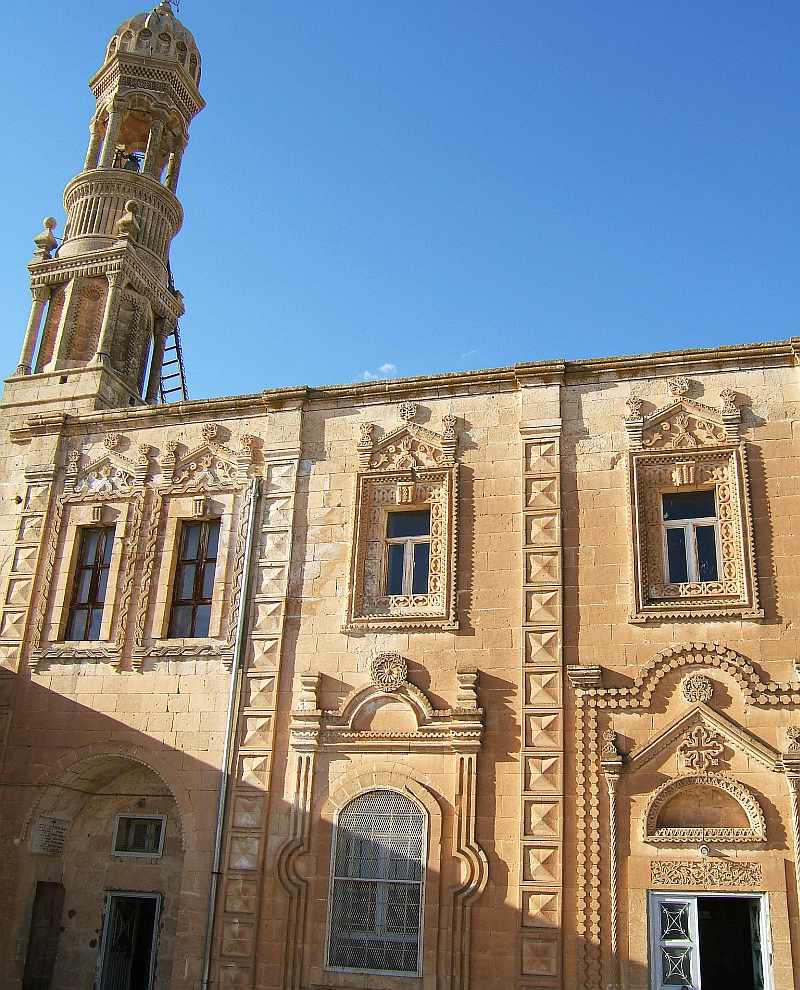
- These are the remains of Hasankeyf, a now ruined but once important settlement about 50km north of Midyat. It's strategically (and romantically) positioned on a bluff overlooking the river Tigris to the left and the wild countryside to the right. The Turks love to picnic here: on Sundays all the caves and overhangs are filled with hundreds of families, their blazing BBQs and blaring stereo sets valiantly competing with each other. The higher reaches of the place are thankfully harder to reach and almost empty.
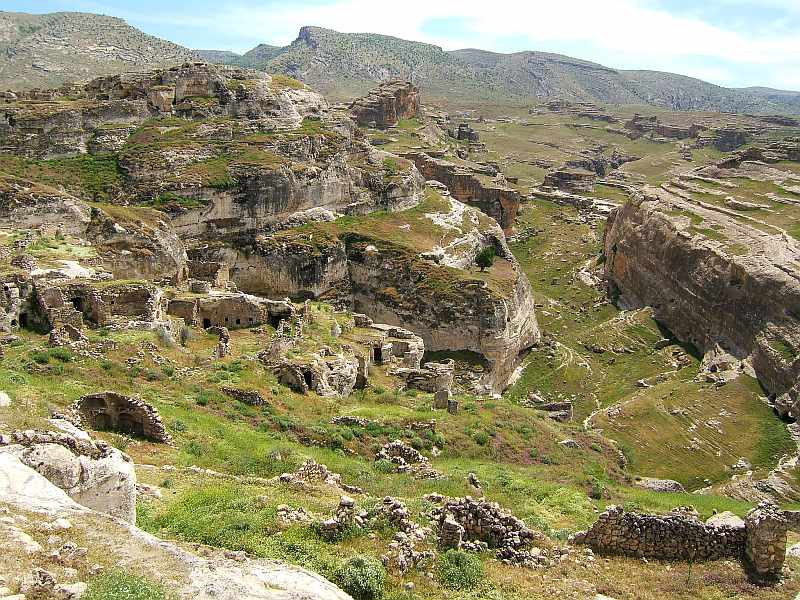
- Next border crossing: into Syria 1
$updated from: Turkey 2.htxt Thu 27 Apr 2017 10:06:49 thomasl (By Thomas Lauer)$




